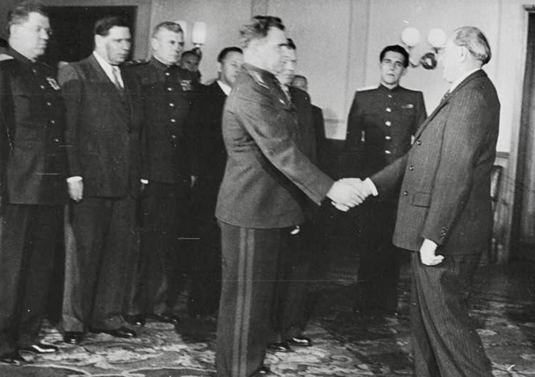The Strategic Importance of Stalingrad
- Maria A. Kithcart

- Dec 16, 2021
- 2 min read

Russian text: Сталинград 9 мая 1972. Встреча Сталинградцев в день Победы с командующим 8ой гвардейской В.И. Чуйковым. Тебя, Сталинградка, здесь не хватает. Гала
English translation: Stalingrad 9 May 1972. Meeting of Stalingraders on Victory Day with the Commander of the 8th Guards V. I. Chuikov. You, Stalingradka, are missing here. Gala (Stalingradka means a resident of Stalingrad.)
There are times in organizations where a certain event or series of events can be pinpointed as propelling the overall strategy forward. A change in leadership, the adoption of new software, the restructuring of the ranks, or the implementation of a new vision are all recognized as turning points in an organization's success. In his book titled Stalingrad Guards Go West, Marshal Chuikov explains the strategic importance of the Battle for Stalingrad, which set the tone of Red Army dominance for the remainder of the Great Patriotic War:
“The Battle of Stalingrad falls into two periods; in each of them, individual components of the general strategic plan of the Soviet Supreme High Command to defeat the enemy were decided. The defensive period lasted from 17 July to 18 November 1942. This period included defensive battles on the distant and near approaches to Stalingrad and the defense of the city. Under powerful, concentrated attacks of the enemy, the 62nd and 64th armies slowly, offering fierce resistance, retreated to Stalingrad. The enemy seemed to push them into the city. The course of the battles developed in such a way that the 62nd Army was entrusted by the high command with the task of defending the city from the west, and the 64th Army was entrusted with the task of defending the southern approaches. The main grouping of the enemy aimed at the chest of the 62nd Army.
The second period of the Battle of Stalingrad began on November 19 and 20 with a powerful counteroffensive by the Southwestern, Don and Stalingrad fronts. The 62nd and 64th armies were also ordered to attack and destroy the enemy surrounded in Stalingrad. This period ended on 2 February 1943 with the destruction and capture of the encircled enemy group in Stalingrad and at Stalingrad. It was in this second period, in the process of a powerful counteroffensive, that the preconditions for the development of a general offensive by Soviet troops in the south of the country were born and created. In December 1942, the entire southern wing of the Soviet-German front began to move, Nazi troops began to roll back to Kursk, Kharkov, Voroshilovgrad and Rostov-on-Don. The defeat of the Stalingrad grouping created favorable conditions for expelling the enemy from the North Caucasus. Fascist troops here were forced to retreat to Rostov-Don, to Novorossiysk” (5-6).



